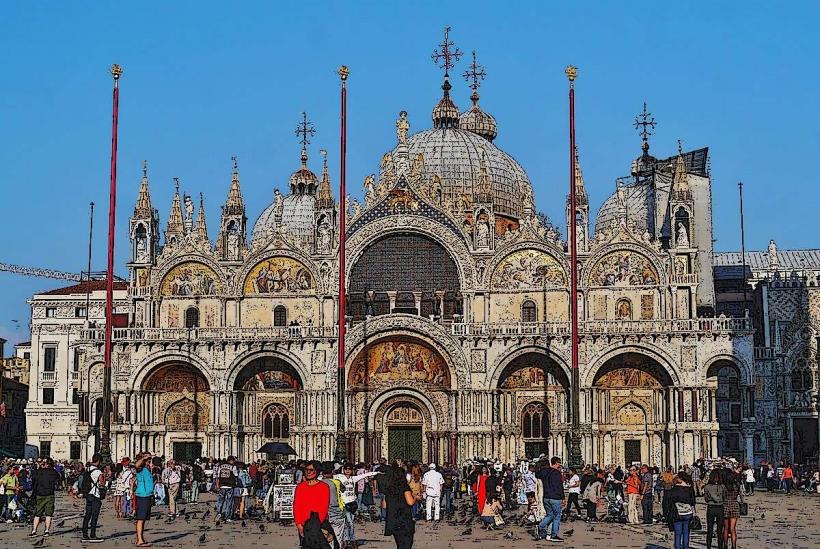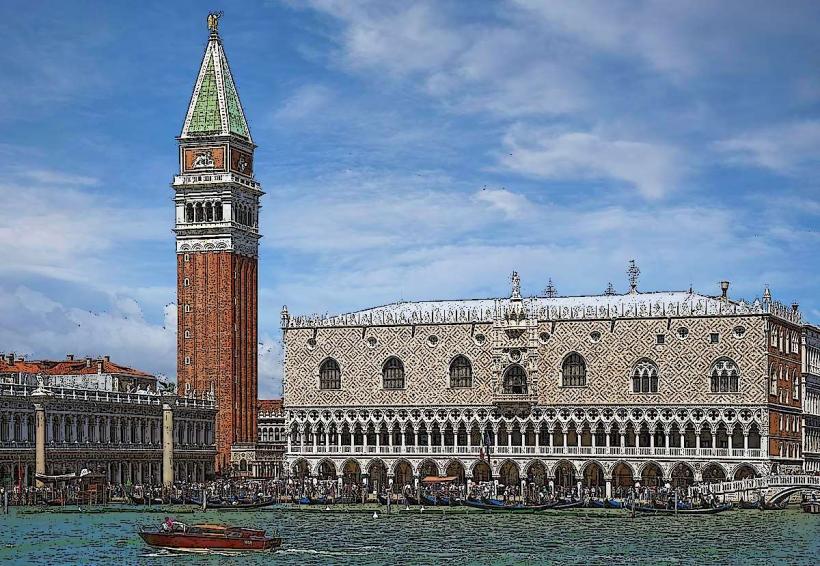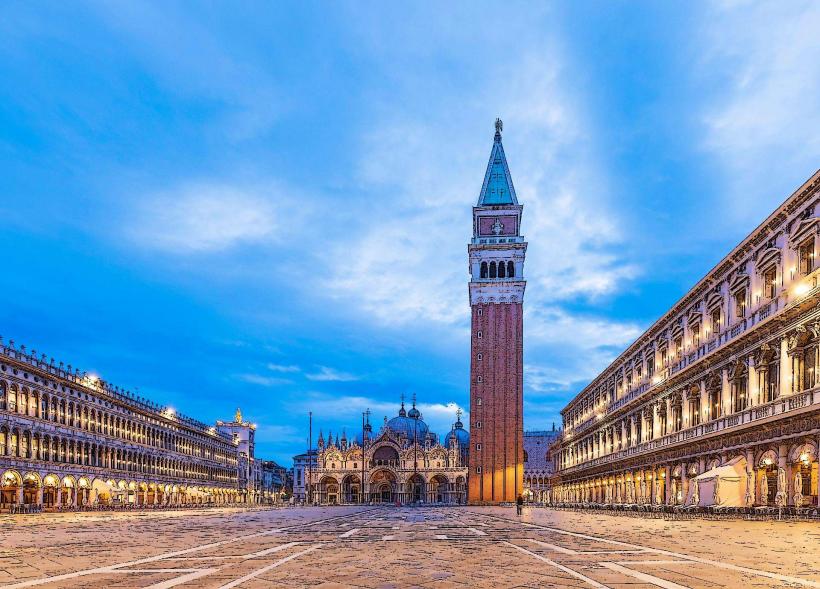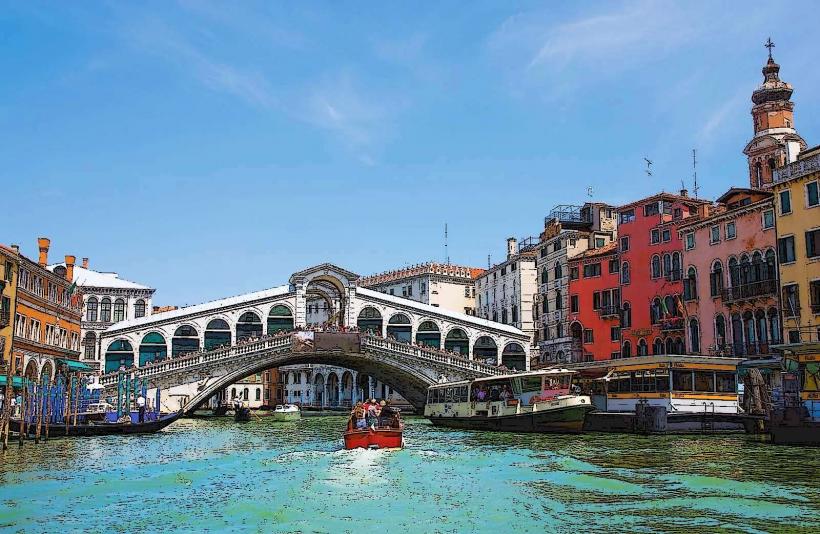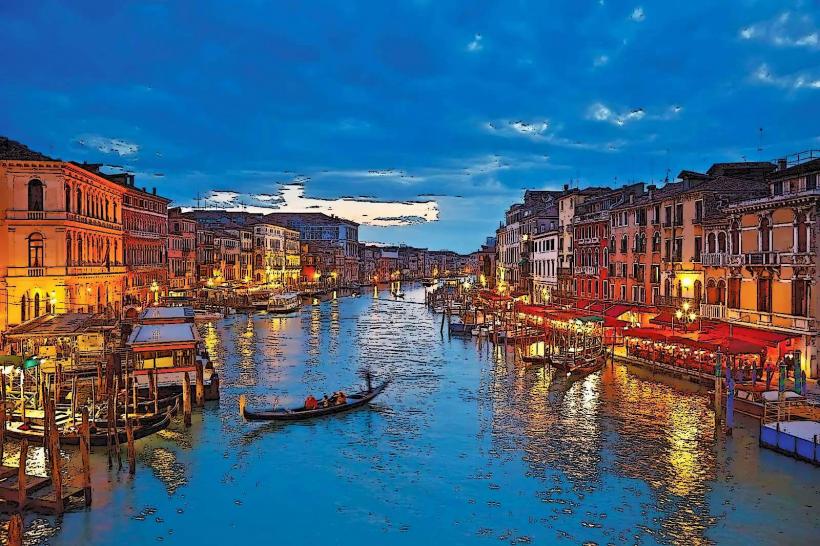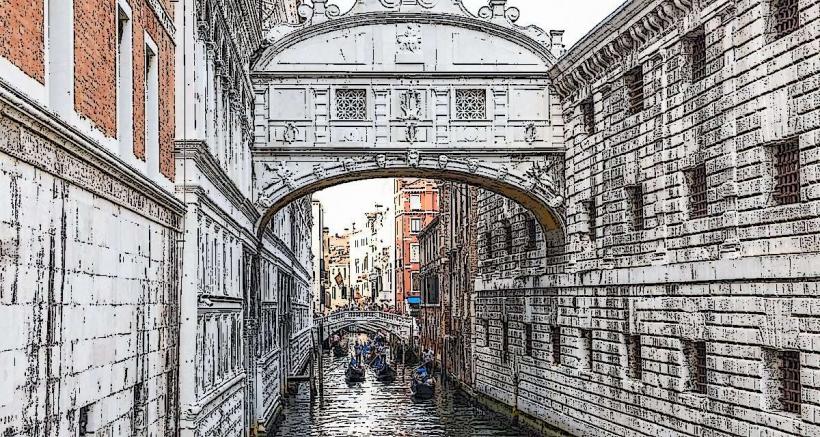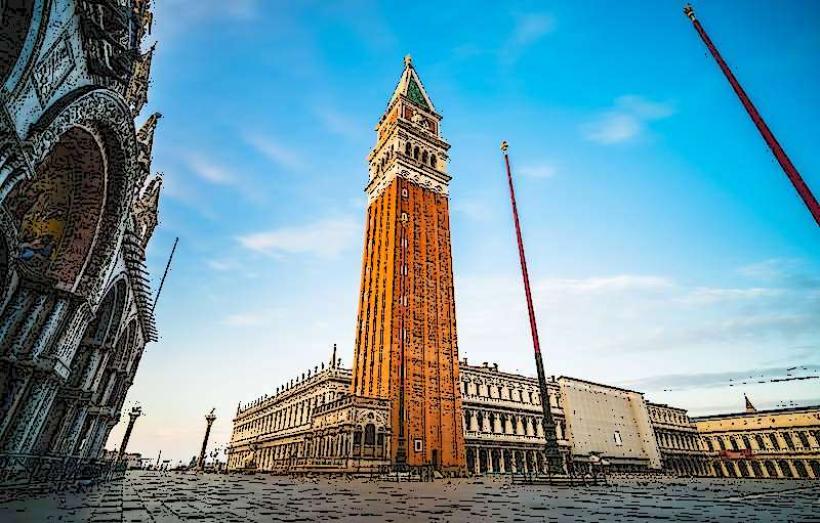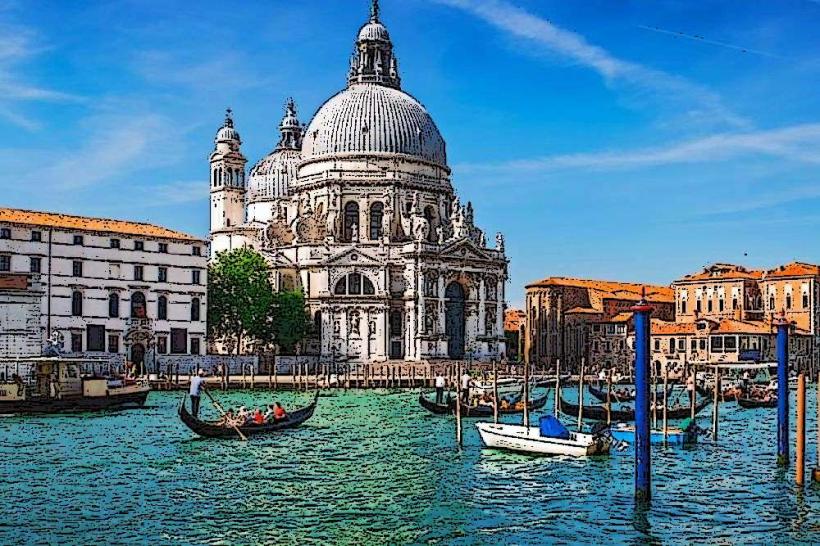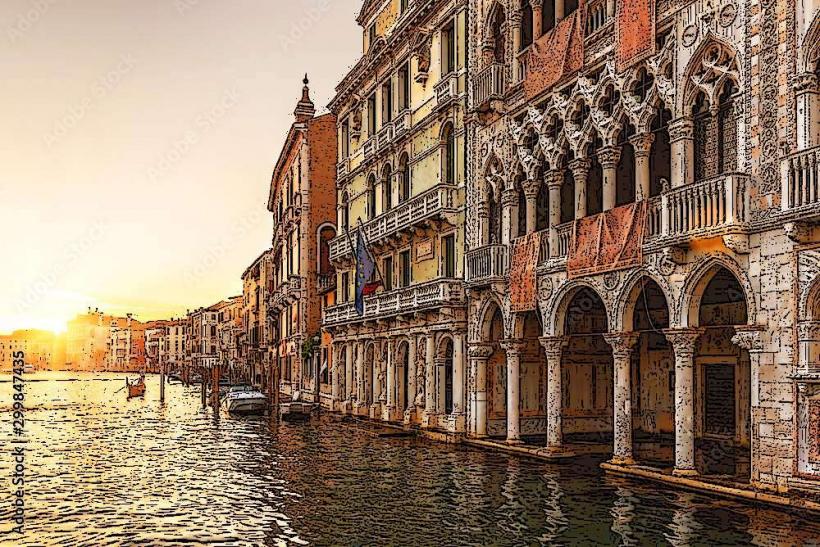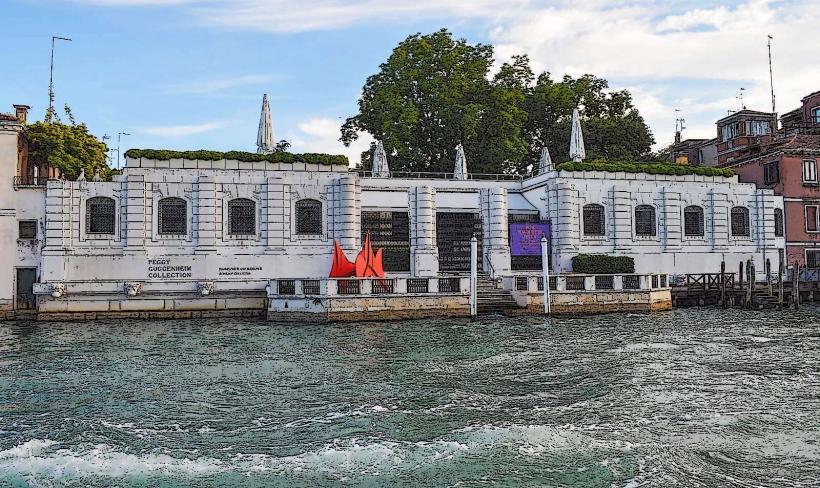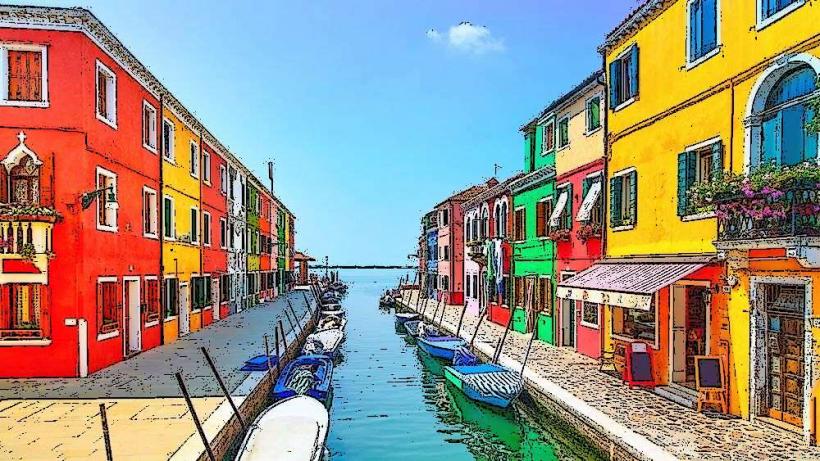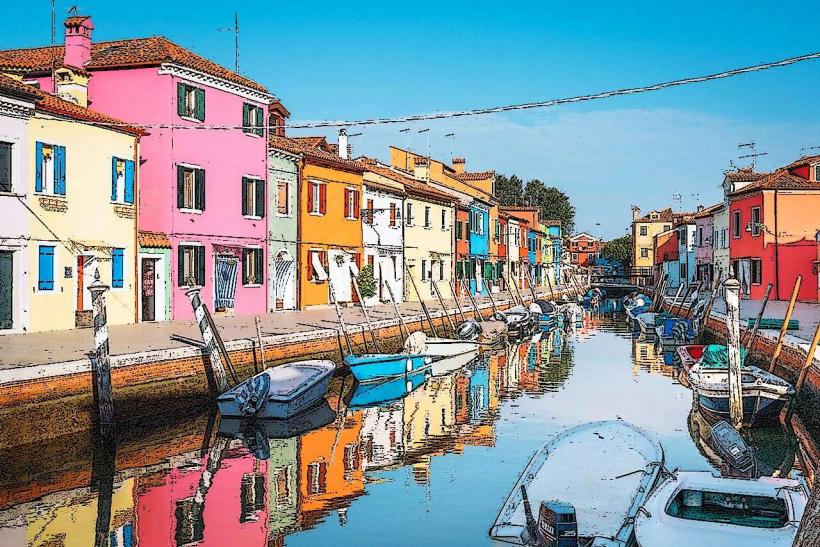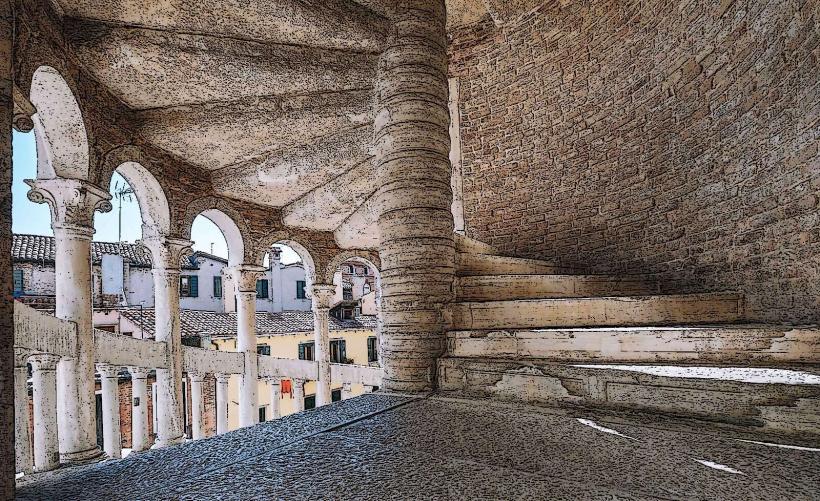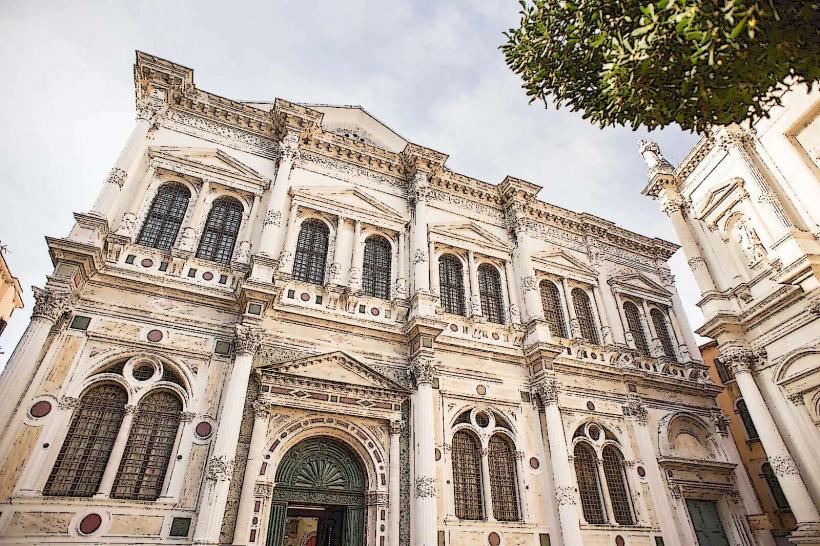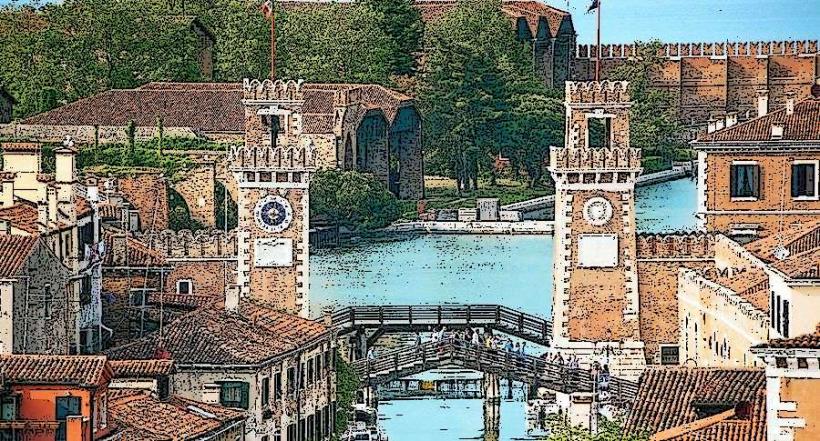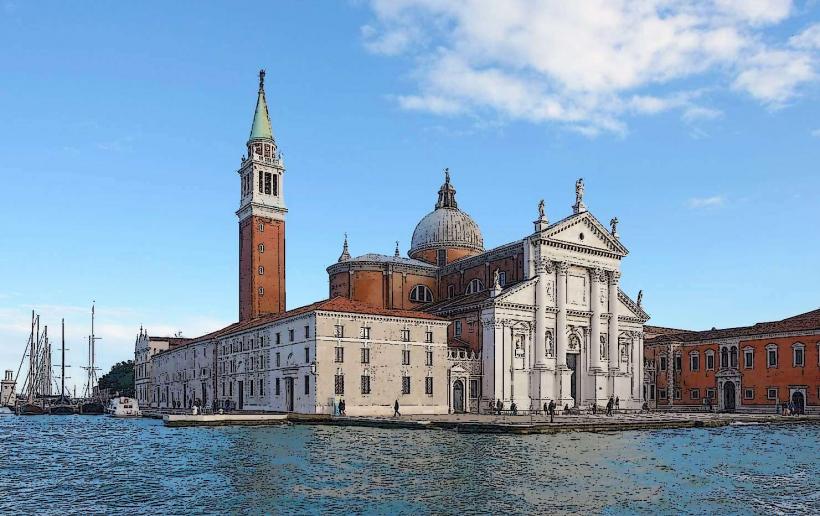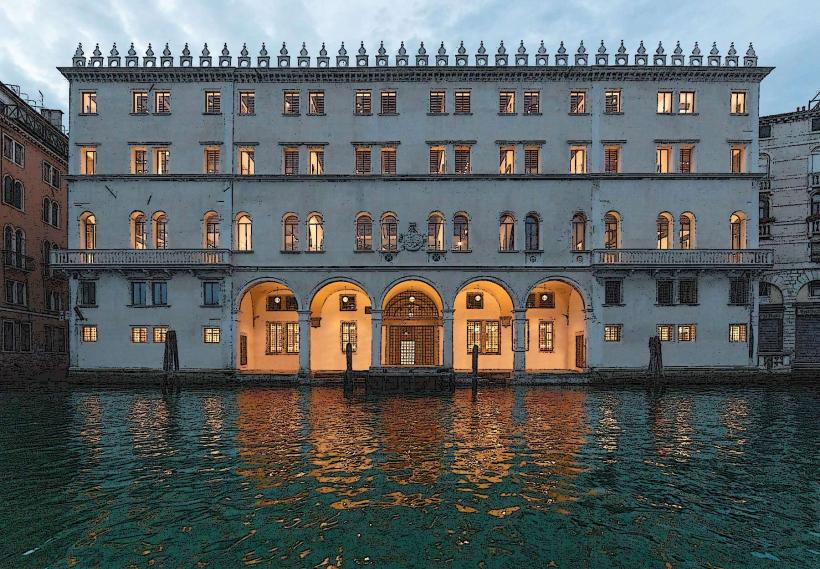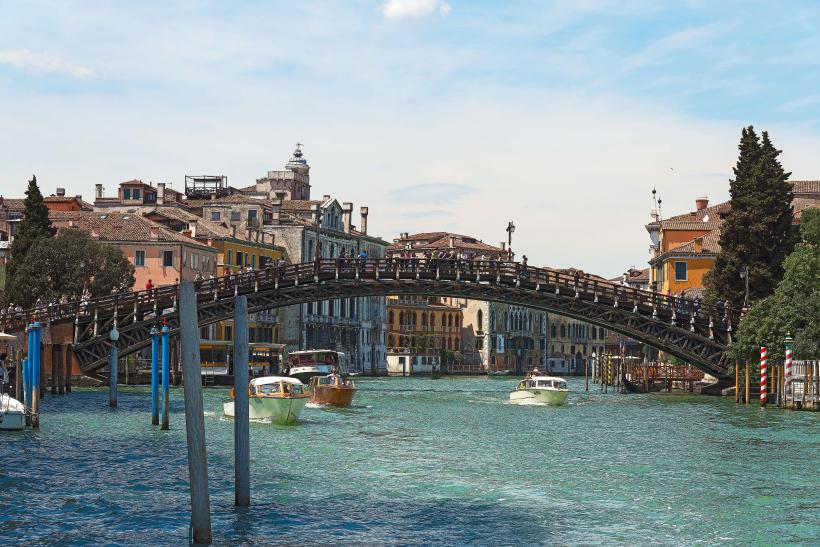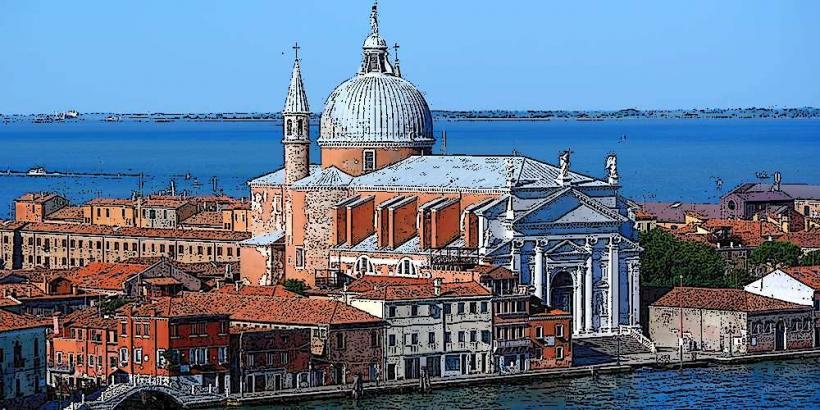Information
Landmark: Teatro La FeniceCity: Venice
Country: Italy
Continent: Europe
Teatro La Fenice is one of the most famous and historic opera houses in the world, located in Venice, Italy. Known for its exquisite architecture, its rich cultural history, and its central role in the development of Italian opera, La Fenice is a symbol of the city’s long-standing tradition of arts and music.
1. History and Significance
- Foundation: Teatro La Fenice was originally founded in 1792. The name "Fenice" (which means "phoenix" in Italian) symbolizes the theater's resilience and its ability to rise from the ashes, as it has been rebuilt multiple times due to devastating fires.
- Cultural Impact: The theater has been one of the leading venues for opera and classical music in Venice and Italy for over two centuries. It has hosted some of the most famous opera premieres in history, including works by Giuseppe Verdi and Giacomo Puccini, and it has been an important hub for the Venetian Carnival and other cultural events.
- Name and Symbolism: The theater’s name, “La Fenice,” was chosen to represent the idea of rebirth after the theater was destroyed and rebuilt several times, much like the mythological Phoenix that rises from its own ashes.
2. Architectural Features
- Original Design: The original theater was designed by the architect Giannantonio Selva in a neoclassical style. It was built on the site of a former theater, the Teatro San Benedetto, which had been destroyed by a fire in 1774. The new building was designed to accommodate an increasingly popular operatic scene in Venice, with a larger auditorium and improved acoustics.
- Reconstruction After Fires: The theater has been destroyed by fire twice. The first was in 1836, when the theater was almost completely gutted by a blaze, leading to its reconstruction under the direction of architect Francesco Bagnara. The second devastating fire occurred in 1996, when a fire broke out during the night, completely destroying the building. The theater was rebuilt and reopened in 2003, maintaining the essence of its original architecture while incorporating modern techniques.
- Facade and Interiors: The facade of Teatro La Fenice is adorned with statues and columns, reflecting its neoclassical design. The interior of the theater is just as stunning, with luxurious velvet seats, gilded moldings, and a grand chandelier that hangs from the center of the ceiling. The main hall features a horseshoe-shaped seating arrangement, a traditional design that enhances the acoustics of the opera performances. The ceiling is decorated with frescoes, and the theater has a series of loggias and balconies that allow for excellent sightlines from almost every seat.
3. Opera Premieres and Performances
- Verdi and Puccini: One of the theater’s most important roles in opera history is its association with the works of composers like Giuseppe Verdi, Giacomo Puccini, and Vincenzo Bellini. Verdi’s "Ernani" premiered at La Fenice in 1842, and his "La Traviata" was performed here for the first time in 1853. Puccini's "La Rondine" was also premiered here in 1917. These performances helped cement La Fenice's reputation as one of the top opera houses in Europe.
- Other Performances: In addition to hosting opera, the theater has staged numerous ballets, symphony concerts, and other classical music performances. It has long been a vital part of Venice's cultural life, attracting prominent composers, conductors, and performers from all over the world.
- International Fame: Over the years, La Fenice has become synonymous with excellence in opera and has hosted many of the world’s greatest musicians and singers. The theater remains one of the most revered venues for opera in the world, attracting visitors from across the globe.
4. The Fire of 1996 and Rebuilding
- The 1996 Fire: On January 29, 1996, a devastating fire broke out in the theater, causing extensive damage and completely destroying much of the structure. The fire began in the scenic storage area and quickly spread throughout the building. The fire resulted in the loss of many priceless elements, including paintings, sculptures, and some original furnishings.
- Reconstruction Efforts: After the fire, extensive efforts were made to rebuild La Fenice. The reconstruction was overseen by a team of architects and craftsmen who meticulously restored the theater to its former glory, using historical records and photographs. Modern safety measures and technology were incorporated to ensure that the building could withstand any future threats.
- Reopening in 2003: After seven years of restoration work, Teatro La Fenice reopened in 2003 with a grand gala performance. The reopening was a momentous occasion, not only for Venice but for the international opera community, symbolizing the resilience of both the city and its cultural heritage.
5. Theatrical Experience and Acoustics
- Acoustics: Teatro La Fenice is renowned for its acoustic properties, which are perfect for opera performances. The horseshoe-shaped auditorium creates ideal sound reflection, making every note sung or played on stage resonate clearly throughout the room. Many opera singers and musicians have praised the acoustics of La Fenice, and it remains one of the finest sounding opera houses in the world.
- Intimate Atmosphere: Despite its size, La Fenice maintains an intimate atmosphere. The seating is arranged in such a way that the audience feels close to the performers, adding to the intensity and emotional impact of the performances. The theater’s relatively small size compared to other major European opera houses means that it offers a more personal, engaging experience for attendees.
6. Visiting Teatro La Fenice
- Location: Teatro La Fenice is located in the heart of Venice, not far from Piazza San Marco. It is easily accessible by foot through the city’s narrow streets and canals, which adds to the charm of the journey to the theater.
- Tours and Performances: Visitors can take guided tours of Teatro La Fenice to learn about its history, architecture, and significance in the world of opera. Tours often include access to the main auditorium, the balconies, and the stage, providing a glimpse into the world of Venetian opera. Alternatively, visitors can attend live performances at the theater, which hosts opera and concerts throughout the year, with a focus on traditional Italian opera as well as modern productions.
- Tickets and Accessibility: Tickets for performances can be purchased directly from the theater’s website or box office. The theater also offers student discounts and special packages for those attending multiple performances.
7. Conclusion
Teatro La Fenice stands as a monument to the resilience and cultural richness of Venice. Its history, artistry, and architectural beauty make it one of the most important cultural landmarks in the world. Whether you are visiting to explore the theater’s history, enjoy an opera performance, or admire its stunning design, Teatro La Fenice is a must-visit for anyone interested in classical music, opera, or Venetian history. Its ability to rise from the ashes, both literally and metaphorically, makes it a symbol of the enduring power of art and culture.

